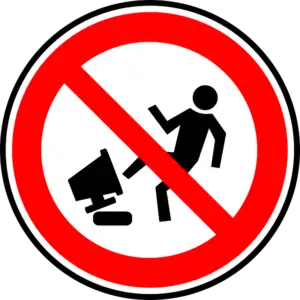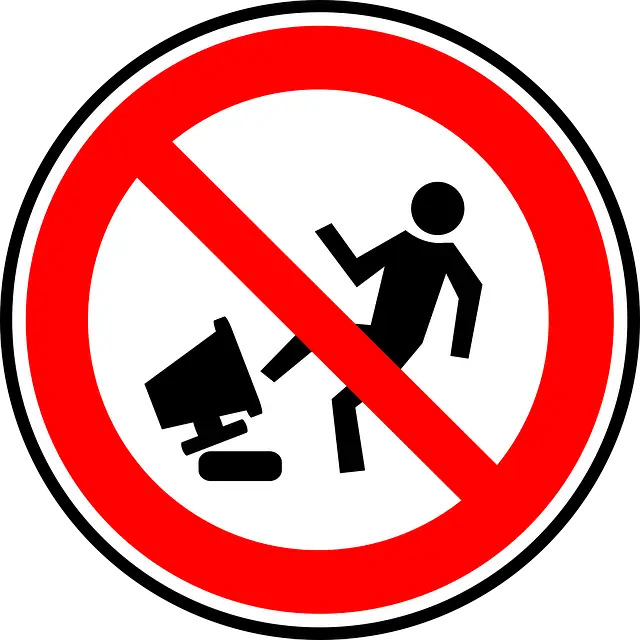Table of Contents
Displaced Anger and 4 ways to handle it
Displaced anger: It’s natural to feel angry after experiencing a traumatic event. However, it’s crucial to deal with that anger healthily rather than displace it.
What is displaced anger?
Displaced anger is a type of anger that is directed at a person or object other than the source of the frustration or anger. This may be done because the source of the anger is unavailable, non-existent, or otherwise not an outlet for the individual’s feelings. There are many reasons why someone might displace their anger.
 In some cases, it may be because they cannot express their feelings directly to the source of the anger. In other cases, it may be because they believe that expressing their anger directly would be futile or result in negative consequences.
In some cases, it may be because they cannot express their feelings directly to the source of the anger. In other cases, it may be because they believe that expressing their anger directly would be futile or result in negative consequences.
Anger displacement can often lead to misunderstandings and conflict, as the target of the displaced anger may not be aware of the individual’s true feelings. It is essential to be mindful of when you are feeling displaced anger so that you can address the underlying issues more constructively.
Examples of displaced anger
Here are ten examples of displaced anger:
- Yelling at a family member because you’re annoyed with your boss.
- Breaking dishes after having a bad day.
- Kicking a wall or door after being frustratingly cut off in traffic.
- Feeling annoyed towards a friend because you had a fight with your partner.
- Critiquing someone’s parenting skills when you’re angry about your childhood.
- Putting down a colleague to make yourself feel better about your work insecurities.
- Lashing out at a poor customer service representative just doing their job.
- Throwing or smashing objects when you’re angry at yourself.
- Taking out your frustration on an animal, even though they’re innocent and can’t understand what’s going on.
- Using anger as an excuse to hurt someone physically or emotionally due to your pent-up rage.
These are just ten examples of anger displacement – there are many more ways that people displace their anger onto others to avoid facing the real source of their frustration, fear, or pain. If you’re struggling with managing your anger in healthy ways, it might be worth seeking out
How can you identify displaced anger in yourself or others?
Displaced anger is one of the most destructive emotions. It can ruin relationships, cause communication breakdowns, and lead to physical violence. So how can you identify displaced anger in yourself or others? Here are some tell-tale signs:
- Displacing anger often results in outbursts that are disproportionate to the situation. For example, if someone cuts you off in traffic, you might yell and shake your fist, even though there’s no real threat.
- Displaced anger is often directed at people who are not the source of the problem. For example, you might find yourself getting angry with your spouse or children even though your boss is the one who ruined your day.
- Displacing anger usually results in negative consequences. For example, you might say things that you later regret or get into a physical altercation that could have been avoided.
If you exhibit any of these signs, it’s essential to take a step back and understand the root cause of your anger. Once you’ve identified the source of your frustration, you can start to deal with it more constructively.
The causes of displaced anger
 Have you ever been angry over something that had nothing to do with the current situation? Sure, we’ve all been there. But why does this happen? More often than not, displaced anger is the result of unresolved feelings from the past.
Have you ever been angry over something that had nothing to do with the current situation? Sure, we’ve all been there. But why does this happen? More often than not, displaced anger is the result of unresolved feelings from the past.
Maybe you’re still harboring resentment towards a former friend or colleague. Or perhaps you’re dealing with some unresolved trauma from your childhood. Either way, displaced anger deflects these difficult emotions onto someone or something in the present. Of course, this isn’t healthy or productive in the long run.
Also, anger displacement is a defense mechanism that occurs when a person cannot express their anger directly at the source. Instead, they direct the aggression towards someone or something else. This can often be seen in children, who may take their frustration out on their toys or siblings. Displaced anger can also occur in adults and may be directed towards work colleagues, family members, or even inanimate objects. While it can be a helpful defense mechanism, anger displacement can often cause further problems if not resolved.
If you find yourself regularly having angry thoughts or feeling angry for no good reason, it might be time to explore some of those unresolved issues from your past. Only then can you begin to move forward.
The consequences of displaced anger
The consequences of displaced anger can be significant, both for the individual and for those around them. When you anger out on someone, the result can be both destructive and self-destructive. On an interpersonal level, this maladaptive behavior can lead to ruined relationships, lost jobs, and even violence and can encourage negativity around you.
Displaced anger can also cause problems on a societal level, as it can be directed at groups of people who are unfairly blamed for the individual’s problems. Finally, displaced anger often leads to self-destructive behaviours such as substance abuse, reckless driving, and self-harm. Displaced anger is a serious problem that can have far-reaching consequences. If you find yourself regularly displacing your anger, it is vital to seek professional help from a therapist to learn healthy ways of dealing with your emotions.
How to deal with displaced anger
Displaced anger can be frustrating because it can be challenging to identify the source of the anger. However, there are some steps that you can take to deal with displaced anger. First, try to identify the source of the anger. If you’re not sure why you’re angry, take some time to reflect on recent events and interactions.
Once you’ve identified the source of the anger, you can start to address it directly. If you’re angry with someone, try to have a calm and constructive conversation with them. If you’re mad about a situation, try to take steps to change it or remove yourself from it. Finally, remember that it’s okay to feel angry. You don’t need to bottle up your emotions or force yourself to suppress your feelings of anger. Instead, try to express your rage healthily and productively.
There are different ways to cope with this negative emotion and several techniques that can be used to deal with misplaced anger:
- Online therapy: This can be a helpful way to deal with displaced anger because it allows you to discuss your feelings in a safe and confidential space. You can also explore the root cause of your anger and learn healthy coping mechanisms.
- Trigger management: If you know what triggers your displaced anger, you can try to avoid those triggers or healthily manage them. For example, if you get angry when you see messes around the house, you can try to tidy up regularly, so you don’t get overwhelmed.
- Coping skills: Many coping skills can help with displaced anger, such as deep breathing, relaxation techniques, and journaling. Experiment to see what works best for you.
- Changing behavior: If you’re displacing anger often, it may be helpful to talk to a therapist about changing your behavior. This can involve learning to express anger healthily, setting boundaries, and managing stress. There are various branches of psychology that provide anger management programs.
Conclusion
Displaced anger can be a significant problem in our lives and relationships, but it is also something we can work to overcome. By learning to identify displaced anger in ourselves and others, we can start to understand the causes and consequences of this emotion. We can also begin to develop strategies for dealing with displaced anger constructively. We can learn to manage our emotions more effectively and maintain healthier relationships with practice. Have you ever dealt with displaced anger? What strategies worked best for you?
